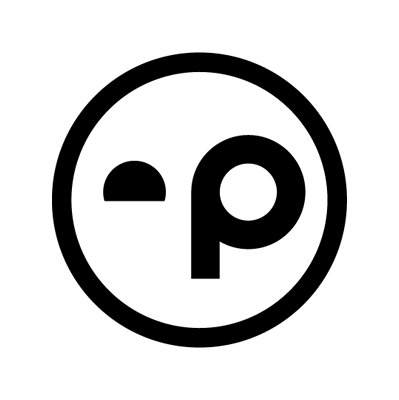
How To Write a Marketing RFP for Your Next Agency Partner
Most organizations don’t write marketing requests for proposals (RFPs) very often, and that’s understandable. When you do, it usually means your business is facing a moment of change. Maybe you’ve outgrown your current agency. Maybe you have a new product to launch or need to overcome slumping sales, competitive pressures, or a tough economy. Whatever the reason, the goal is the same: to find the partner that can help you move your brand forward.
However, sometimes that’s where the trouble starts.
Because most teams are unfamiliar with the RFP process, they often write documents that are too vague, too rigid, or too focused on the wrong things. And the more an RFP misses the mark, the less likely it is to attract strong, strategic thinking from the agencies you actually want to work with.
In this edition of Plain Talk, we’ll share some practical steps to help you write better marketing RFPs—the kind that lead you to the right agency partner.
- Step 1: Know What You Need
- Step 2: Ask the Right Questions
- Step 3: Be Open About Your Marketing Budget
- Step 4: Have a Transparent Marketing RFP Process
- Step 5: Respond to Participants
Step 1: Know What You Need: RFP vs RFI Vs RFQ
First, is an RFP the way to go? Running one—from writing the document, to searching for agencies to invite, to reviewing proposals or conducting in-person pitch meetings—demands a significant amount of time and effort from clients. If you’ve done strategy in-house, determined the desired tactical support, and now just need a hand with execution, maybe not. Purely executional needs are often better served with a request for “quotes,” where basically you are asking for an estimate and not much more. Or, in cases where you’re still gathering details or exploring capabilities, requesting more information can be a more efficient way to assess agency fit before diving into a full proposal. Whether you need a quote or just more context, you can save both yourself and the agencies that effort by simply asking for what you really need.
What is an RFI?
An RFI answers specific “screening” questions that will help you decide if you want each agency to advance to the RFP or not. It’s a low-cost, low-effort way for both sides to figure out if the project is a potential fit. You can often find out critical disqualifying information in an RFI that will save you and the agency time.
What to include in an RFI:
- Agency size and structure
- Relevant category experience
- Potential conflicts of interest
- Relevant core capabilities
- Questions about agency culture
- Locations
- Questions about any specific technology you will require
- Billing practices
What is an RFQ?
An RFQ is used when you have a clearly defined scope of work and you’re primarily looking for pricing. It’s a straightforward way to compare costs and timelines across vendors when strategy is already set and you just need help with execution. RFQs are ideal for tactical projects where the deliverables are known and the main objective is to identify the best value for the work.
What to include in an RFQ:
- Detailed description of deliverables
- Quantity or volume needed
- Project timelines or deadlines
- Submission format for pricing
- Required materials or specifications
- Payment terms
- Any mandatory certifications or qualifications
- Evaluation criteria (e.g., price, speed, capacity)
Keep them both uniform. Provide a Word template or simple format. Level the playing field so you’re comparing ideas, not PowerPoint designs.
| Aspect | RFI (Request for Information) | RFQ (Request for Quote) | RFP (Request for Proposal) |
| Goal | Identify potential partners and assess fit | Gather pricing for clearly defined work | Solicit strategic thinking and execution plans |
| Focus | Capabilities, experience, compatibility | Cost, deliverables, and basic logistics | Strategy, creativity, process, and pricing |
| Use Case | Screen vendors for complex/long-term needs | Compare bids for straightforward tasks | Select agency for high-value strategic work |
You can send RFIs and RFQs to a broader group. Then narrow your RFP list to three to five qualified contenders.
Step 2: Ask the Right Questions
Before you start drafting your RFP, get aligned with internal stakeholders. Ask the following questions.
Are we hiring for a project or a long-term relationship?
If you need to design a package for your new product, that doesn’t necessarily imply a long-term relationship. But if you want an agency that can help you design the package, build your go-to-market strategy, and launch the brand a much longer relationship is implied. Importantly, this consideration may also affect the internal agency management responsibilities.
What business challenges are we trying to solve?
For many RFPs, it’s absolutely critical for clients to agree internally and to be able to communicate their business challenges and goals. A great agency partner will look at your problem holistically and may bring unexpected solutions to the table. Additionally, the business problem you are solving and the goals you expect to achieve can and should be defined in advance. These should be tied to the investment you are willing to make for that solution.
Are we looking for execution, strategy, or both?
Many RFPs are of the “we need a website” ilk. Others are more focused on high-level strategy. If you are looking for execution, it is important that you have your strategy clearly outlined as well as tactical considerations. Execution is essentially paint-by-numbers, and if that’s what you need, you should consider a more basic “request for quotes” (or RFQ). If you are looking for a strategic partner and innovative thinker, the RFP focus will be on things like the business challenges outlined above.
Are we open to being challenged?
It’s also worth considering whether you are open to being “challenged” by your prospective agency partner. Over the past few years, some client procurement departments have had a chilling effect on agencies that would normally push to challenge themselves and their prospective clients to consider more creative, novel, and inventive solutions. Today, many procurement-driven RFPs will consider ideas not specifically requested in an RFP as “nonresponsive.” This can have the unintended effect of killing the kind of innovation your business may really need to compete. You may also drive away the better agencies that choose not to pursue RFPs that have these limits.
A real-world example
A few years ago, an excellent nonprofit called the Kentucky Association of Sexual Assault Programs (KASAP) came to us looking for help. The team there had recently won a grant for $100,000 to build awareness and drive engagement with their organization. During our initial call, the client said they were reaching out to us because they needed billboards across the state to drive this awareness and increase calls to their crisis centers. Knowing that $100,000 would not go far with paid media and because this client was open to being challenged, we asked for some time to reframe the problem and possible solutions.
By being allowed to challenge “the ask,” strategize and be creative, we came back with a completely different idea. Instead of buying a few billboards, we utilized their $100,000 and our broadcast-experienced PR team to create an hour-long documentary film. We then secured the statewide PBS channel to broadcast it repeatedly throughout the year. This approach allowed us to deliver far more value and much better results than the aforementioned billboards would have, and together, we were able to help a lot of Kentuckians.
This internal clarity and alignment regarding what you really need from an agency and how you want to work will form a meaningful foundation for a successful RFP process.
Step 3: Be Open About Your Marketing Budget
Let’s deal with this head-on: not sharing a budget doesn’t give you leverage. It just wastes your time and the time of your prospective partners.
When clients withhold financial information including margins, sales goals or desired marketing budget, agencies are forced to guess. That leads to one of three outcomes:
- Proposals that are good but “too expensive” relative to your expectations
- Solutions that underdeliver because the budget was underestimated
- Good agencies opt out of the process entirely and do not respond
You don’t have to land on an exact dollar amount. But providing a budget range that aligns with your sales and profitability goals allows agencies to design thoughtful solutions that meet your expectations. While it may be tempting to have agencies “pitch on price,” clients who include budgets in their RFPs have told us they get much better results. By sharing a budget up front, they’re able to focus on choosing a partner based on the agency’s ability to deliver smart, strategic solutions.
Step 4: Have a Transparent Process
A strong agency review is as much about process as it is about content. Here’s how to make it smooth for everyone.
1. Get an NDA before RFP distribution
If the distribution of the marketing RFP will require you to disclose sensitive information, consider having invited agencies sign a non-disclosure agreement. This should be done before you send out the RFP. This not only protects your confidential information but also allows you to communicate more freely with participants. (This is also where you can run an RFI as previously mentioned.)
2. Distribute RFPs simultaneously
Distribute RFPs simultaneously to everyone invited to participate. The RFP document should include clear instructions as to:
- the problem being solved
- objectives
- KPIs
- budgets
- project timing requirements
- relevant internal research
- data that can be used for working the problem
For example, if you need an agency to build you a website, your RFP is not complete without providing the participants with either access to your site analytics or with detailed analytics reporting.
3. Set a realistic timeline
A realistic RFP response timeline that includes key dates and deliverables submission deadlines, and timing for a final decision. This will help the agencies project manage on their side while also preventing you from getting barraged with calls or emails after submission from agencies looking for your decision.
4. Pre-answer common questions
Most agencies will come prepared with a list of qualifying questions. Be ready to answer these when you invite them to participate in your RFP. As you select participants, consider offering clear, honest responses to questions like the following:
“How many agencies are you inviting to participate in the RFP?”: You don’t have to say who, of course, but it is appropriate to tell agencies whether they are one of four agencies invited or one of twenty.
“Why did you select our agency to participate in your RFP?”: If the real answer is that the agency came up in a Google search, be honest. If it was by referral, reputation, or some other reason, it’s a good idea to be able to give an honest reason.
“Who is/are the decision maker(s) for this RFP?”: Agencies place a lot of value on transparency with this question. Letting prospective agencies know in advance who the players are and how decisions will be made will help brands keep good agencies engaged in the process.
“Why are you conducting the RFP? Is there an incumbent who is being considered to retain the work?”: An early communication could be as simple as:
Dear Mike,
Brand X will be conducting an RFP to find our next marketing agency of record. The assignment will begin on January 1st. The RFP process will consist of five agencies including yours. The incumbent is not participating. We selected your agency based on a number of factors including a referral from John Smith and because of the interesting case studies you had on your website for (brand) and (brand) that we felt related well to our business category and challenges. The RFP will include confidential information, and participants will be required to sign an NDA prior to receiving the RFP document.
Once the RFP document is released, we will reach out to each individual agency (the week of) for a 45-minute Q&A session between your agency and the brand’s RFP team. The RFP is due to be released to the five agencies on (Date) and responses must be submitted on (Date). After we review written responses, we will schedule 90 minutes for each agency team to participate in a live meeting on (date) where we will discuss your RFP response and ask questions.
Regards,
Brand X
5. Conduct more effective Q&A sessions
Some brands or procurement teams run an “arms-length” question period, inviting participants to submit questions and then sending written answers a few days later. This can work well for more technical or complex questions. However, as we noted above, a written Q&A is no substitute for a phone call. When a brand invites an agency to participate in an RFP, it often asks for a significant investment of time and resources.
Today, experts advise agencies to reconsider participating in any RFP where the client refuses to speak or meet with them early in the process. Agency pitch consultants like Mirren point out that a decision-maker who won’t make time for a call with a prospective agency probably isn’t serious about working with them. It’s worth noting that the most sought-after agencies are the ones most likely to take this advice and decline the marketing RFP.
6. Consider the issues of asking for spec work
Some RFPs require “spec work,” meaning unpaid speculative creative work, media plans, or other high-value thinking as part of the pitch process. While difficult to avoid in some cases, like a creative campaign pitch, there is a recent trend among some procurement groups to include new ownership language in their RFPs. These documents may state that the brand will own any work submitted as part of the RFP process. This applies regardless of whether the producing agency ultimately wins the RFP.
Laid out in this way, the ethical problems with this approach are pretty clear. This requirement is an automatic deal killer with good agencies who will generally pull out of the marketing RFP process rather than risk giving their work away. Because of this, many brands have begun to offer to pay a nominal fee for high-value work done as part of the pitch. By paying for this kind of work, the brand will have a better chance of keeping the best agencies engaged and have the chance to own pitch ideas ethically.
7. Provide decision criteria
While there can be an element of spontaneity in the pitch decision process, it is important to have and communicate your primary decision-making criteria and the weight that each factor carries. By being clear, you let agencies know what factors will weigh most heavily in your decision and help them balance emphasis in the different parts of their proposal.
8. Meet face-to-face with agencies and teams
Picking an agency based solely on a written proposal is like picking a spouse you’ve never met based on who wrote you the nicest love letter. Even if agencies submit a written response to the RFP, be sure to include a face-to-face meeting. This gives your team and the agency a chance to discuss topics like agency culture and address any questions about their submission. Picking an agency is a big deal. Meeting them will go a long way to knowing if you will actually like working with them.
On that note, when you meet in person, we suggest that you meet the actual team who will be working with you daily. Why? Some agencies will send in a polished, senior and likeable “pitch team” who will never actually spend meaningful time on your brand. It’s okay to ask for the presenters to be the people who will be the daily contacts who will be on your speed dial if selected.
Step 5: Respond to All RFP Proposals
Few things can harm a brand’s reputation quite like “ghosting.” If you are not familiar, ghosting is the practice in RFPs of gathering responses from your various agency teams and then never responding (except maybe to the winner). We suspect most clients hate notifying losers because they feel bad about it. Agencies understand that losing is a possibility though.
A good RFP process includes a responding to both winners and losers—by phone is best. Be prepared to provide live feedback as to what the losing agency could have done better. By responding with direct, thoughtful input, you help the agency understand where they fell short of your needs. You also improve your chances of receiving more and better agency responses to your next RFP.
Likewise, if the project is cancelled, just say so. If the budget shifted, be transparent. We know it happens.
Final Thought: Marketing RFP Clarity Creates Confidence
You don’t need to write a perfect RFP to get great results. However, writing a clear marketing RFP—one that reflects your values, is grounded in your goals, is honest about your expectations and that has a transparent process—is likely to get you the agency partner you really need. If you have any questions about writing RFPs or any suggestions for a future article, drop us a note here or call us at 502-499-4205.
Our Articles Delivered
Signup to receive our latest articles right in your inbox.



